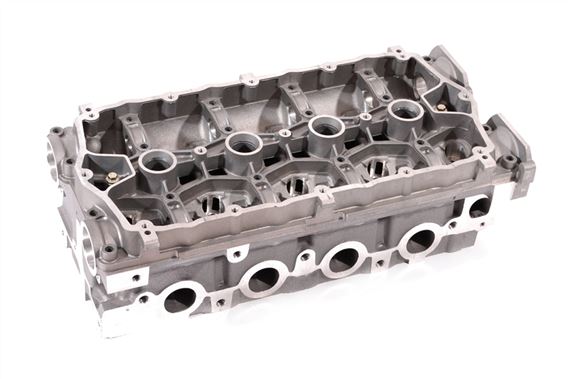Stag Cylinder Head Removal Tool

Does anyone have the above tool for lending to someone who is a member of the Stag Fan Club on FB?

Technical Article: Cylinder Head Removal Glenn Merrell writes: There are currently three 'safe' methods to remove stuck cylinder heads on a Triumph Stag V8 Engine: 1. A head removing plate, this atttaches to the top of your head, has 5 long fine thred bolts that push down on the head studs, gently lifting the cylinder head. Very effective, very safe, does not damage anything. Head extractor plates for the TR7 will work with a bit of alignment and modification, but the plate and hardware cost about $225 from Moss plus shipping. This is probably by far the easiest method: 2. Dual hydraulic rams. We will publish an article on this soon.
This method uses two plates bolted to the intake ports of the cylinder heads. These plates hold one end of a hydraulic ram. The rams are pressurized evenly pushing the heads off the studs. Usually the studs bend if you push the heads too far, the heads get some minor marking on them, but from reviews to now, this seems to be an effective method. Download Affiliate Program Management Sites on this page.
Does anyone have the above tool for lending to someone who is a member of the Stag Fan Club on FB? Technical Article: Cylinder Head Removal Glenn Merrell writes: There are currently three 'safe' methods to remove stuck cylinder heads on a Triumph Stag V8 Engine. There are also 5 studs that go through the centre of the head at an angle and into the inlet side of the block face. Removing stuck Triumph STAG cylinder heads.
Sometimes one head will push off and the other will not, then you have to stop, secure the opposite head and push again. Not commercially available as a kit, you need to make this from scratch and locate two hydrayulic rams. You will probably spend $300 or more getting this together. However if you do not have the coin to shell out for such fancy tools and custom cutting and welding of half inch steel plate, you can always use the old reliable. The ' Rope Method': Preface: The intent of using this method is to remove a stuck cylinder head. Suspending the vehicle on the engine pulling tabs will only stress other components; wedges will trash the cylinder head beyond repair; and the head pulling bracket may not work in all occurrences. The rope method is as old as cylinder heads on internal combustion engines.
Some mechanic trying to remove an old flat head probably perfected it. All I did here is document it for your use. I have used this method on several engines, one with all five studs seized, and in all cases, the heads lifted about +1 inch, enough room to jab saw the studs up close to the head. Also in all cases, no connecting rods were bent. Depending on the reason you are removing the heads, it would be wise to pull the tappet buckets and pallets to see if any valves are bent. If so, expect to find a broken valve in the cylinder, and do not crank the engine without a length of rope in the cylinder. Otherwise, the valve piece will imbed itself into the soft aluminum once for each rotation, and most likely trash your head.
Do not bother trying to soak the studs, the penetrant never goes more than 1/2 inch past the surface, no matter what the claim of the penetrant. But, if it makes you feel good, go ahead and spray away, the runoff will help loosen the grease cake on the side of the engine.
Also, DO NOT attempt to weld anything onto the broken off stud(s), it will only damage the bolting washer surface which needs to be perpendicular to the stud axis. It would be a good idea to view Tony Hart's timing chain video first, available from Tony Hart, the SOC, or Rimmers. Tony does not stock US formats of the video.
The Triumph Stag’s cylinder heads aren’t known for their longevity or strength And our man in Detroit has found this out to his cost. But thanks to the right specialist, he’s a happy man again with a working engine in his stag again. Words and photography: Richard Truett Total Flow saves the day Steve Sanchez, owner of Total Flow Products, with Richard Truett's Stag cylinder head. LAST fall I bought a 1973 Triumph Stag that had been stored in an Indiana barn since 1987. I got the engine running barely well enough to propel the Stag into my warm garage for the winter. My plan was to have the car roadworthy by spring. I performed a compression test and found 7 of the 8 cylinders were all within 125-140 pounds.